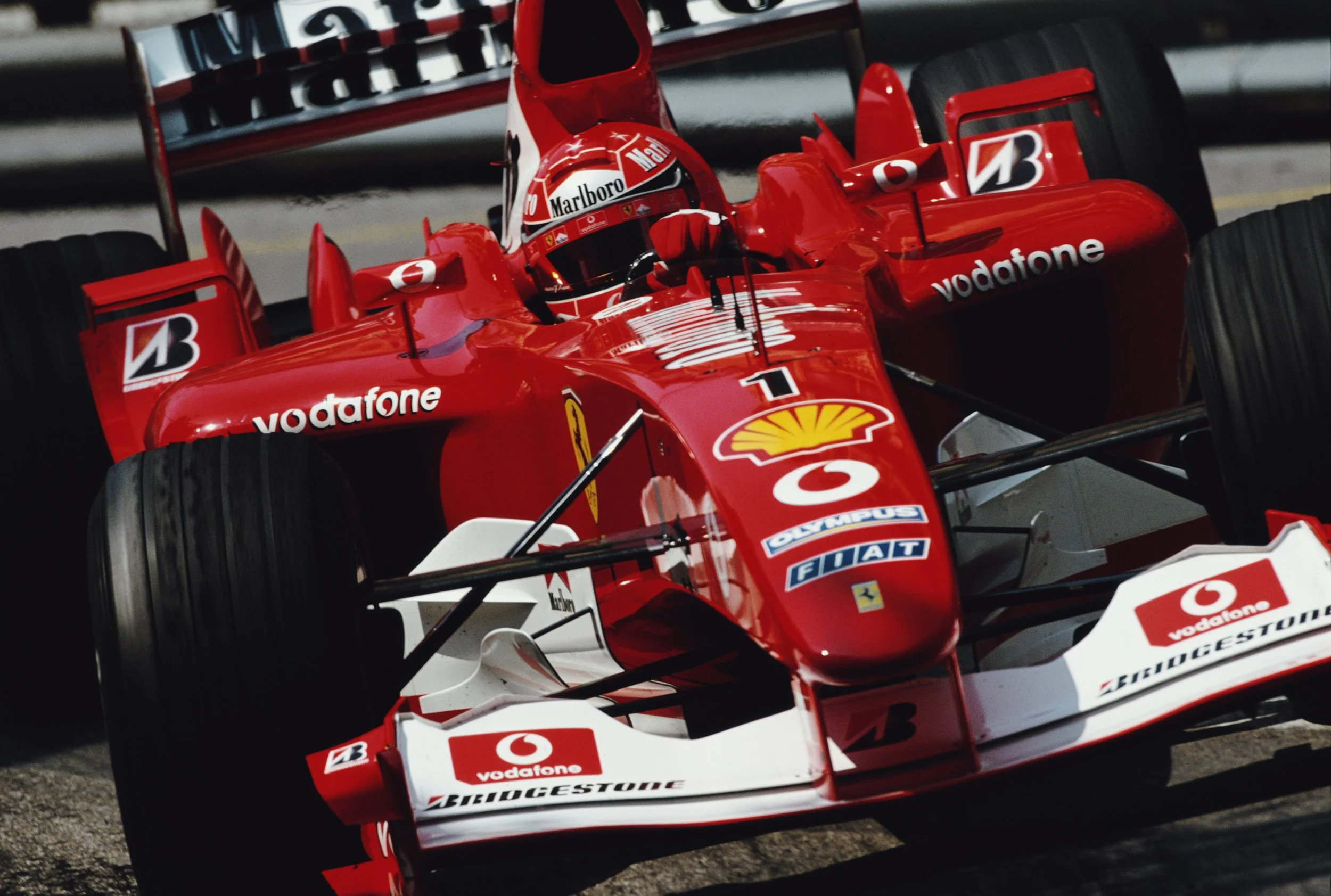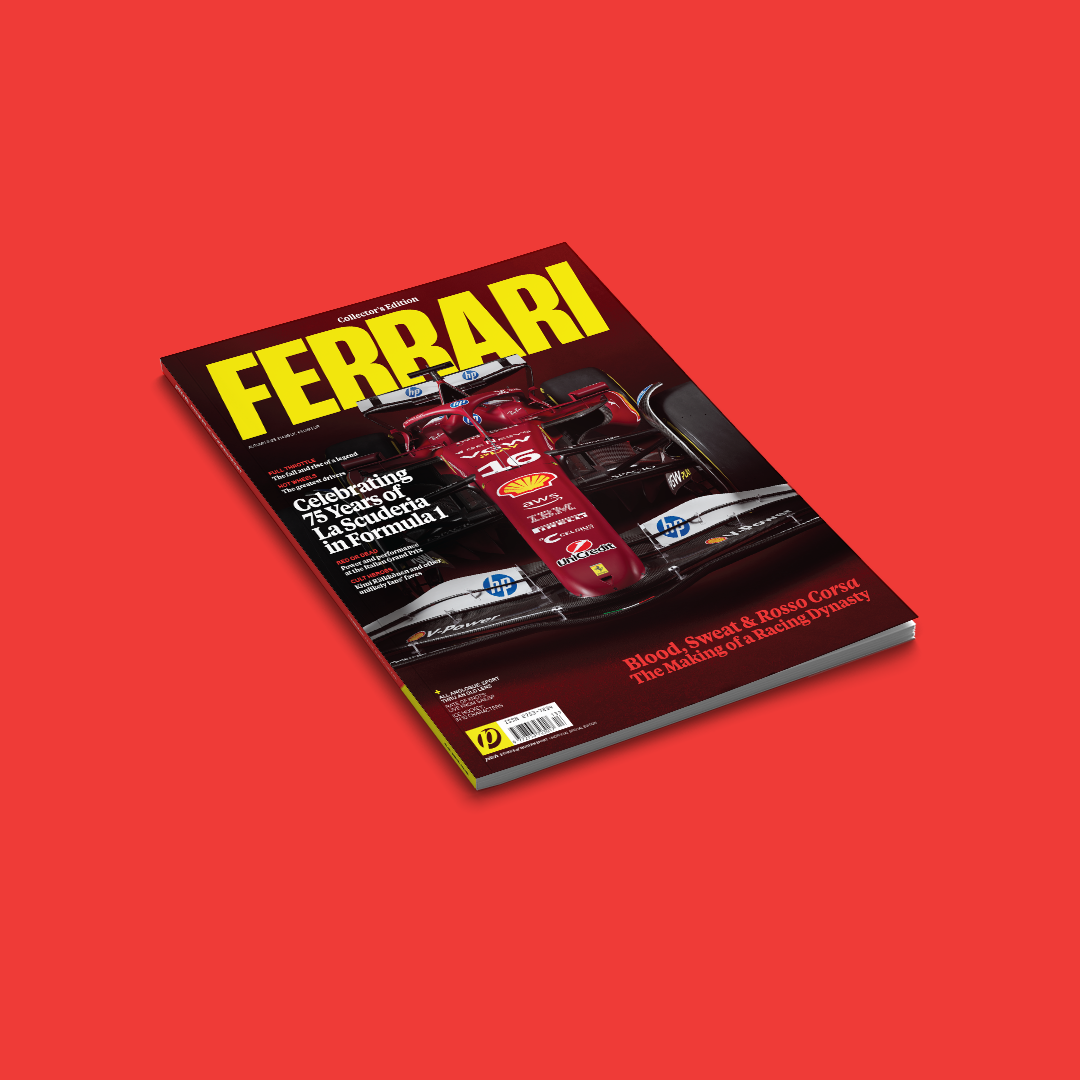Seeing Red
The colours of Enzo Ferrari’s racing career.
WORDS: PAUL SIMPSON“Ask a child to draw a car and, certainly, he will draw it red,” Enzo Ferrari said once. The date and context historically unknown. He became emotionally attached to the colour as a child. When he was ten, accompanied by his father Dino and elder brother Alfredo, he watched Turin’s Felice Nazzaro win the 1908 Grand Prix in Bologna driving a ‘Racing Red’ Fiat. The family car in which his father drove away to join the International Red Cross in 1915, was a red four-cylinder Diatto Torpedo. A year later, after being transferred to the Italian Air Force, Dino died of bronchitis and pneumonia.
Red was also the colour that Italian cars had to race under. In 1907, FIA, the sport’s governing body, asked each country to choose a specific colour to compete in. France opted for blue, Britain the iconic Racing Green, and Italy Racing Red (Rosso Corsa) in homage, Enzo’s biographer Richard Williams suggests, to the red shirts worn by Giuseppe Garibaldi’s army that had helped unify Italy in 1861. The revolutionary general was so popular in England that when Nottingham Forest was founded in 1865, the players wore red-tasselled caps in his honour and the club was nicknamed, for a time, the ‘Garibaldi Reds’.
In 1950, when Formula 1 officially started, those original colour regulations were still in force so Ferrari’s cars were painted Racing Red. Time, repeated success (including 15 world titles in the constructors’ championship) and the charisma of such drivers as Alberto Ascari, Niki Lauda and Michael Schumacher, have made the colour synonymous with the luxury car marque. Even today, it is estimated that four out of ten Ferraris sold are red.
That said, Ferrari’s racing history is not completely monochrome. Yellow was the colour of Enzo’s home town Modena – which is why it provides the background behind the black Prancing Horse on the company logo – and, in 1951, Italian driver Salvatore Ammendola won the Inter-Europe Cup at Monza in a yellow Ferrari sports car. A yellow 275GTB was unveiled at the 1964 Paris motor show and by the end of the decade, cars of this colour were being manufactured at Maranello.
The most radical departure from red, which happened at the end of the 1964 F1 season, was sparked by one of Enzo’s periodic run-ins with the authorities. He always had something of a love-hare relationship with motor racing – indeed, as long ago as 1934 he had strongly hinted he would leave the sport for good – but his attitude to the governing bodies was less ambiguous: he simply hated them.
Even in 1984, at the age of 86, he commissioned a new car to compete in the Indy 500, in a barely veiled threat to the authorities that he might take his famous marque across the Atlantic if they didn’t play ball. Luckily, he changed his mind. The car, which never actually raced, is now a museum piece.
In 1964, his dispute with the FIA and Italian racing’s governing body began when they refused to approve his new car, the 250 LM coupe. Rival teams had alleged he had cheated by not making the required number of vehicles, a claim which, mysteriously, a visit to Ferrari’s Maranello factory failed to prove or disprove.
Enraged, Ferrari vowed that he would never race in red again. For the final two Grand Prixs of that season, competing under the non de plume North American Racing Team, his drivers raced in blue and white cars, the designated colours for teams licensed in the United States.
The whole episode is reminiscent of those occasions when football teams play an important match in an unpopular change strip and pay the price, but the new colour scheme didn’t faze Ferrari’s lead driver John Surtees. A former motorcycle world champion, he had never even watched a Grand Prix but became intrigued by the sport after he bumped into Ferrari driver Mike Hawthorne at a banquet and was advised: “Try a car some time, they stand up easier”. He had only joined the team in 1963 after catching Enzo’s eye after finishing fourth in the world rankings in the team managed by retired British driver Reg Parnell..
Although Surtees spun on lap 63 at the United States Grand Prix in New York, he and Graham Hill were the only drivers whose cars were working properly by the end of the race. His second place finish put him on 34 points, five behind race winner Hill, who led the driver’s standings.
At the start of the season’s final race in Mexico City, Jim Clark, Hill and Surtees all had a shot at the world championship. Surtees started slowly, trailing in fifth and seemingly out of contention for the Grand Prix and the world title. His prospects were transformed by two large helpings of luck. His team-mate Lorenzo Bandini (accidentally) crashed into the back of Hill’s BRM, which spun and lost power. Needing a win to become world champion, Clark raced into the lead but one lap from the finish, with victory seemingly in his grasp, the engine of his Lotus seized up. At that late stage, Surtees had moved up to third and, after Bandini let him pass, he came second, pipping Hill to the title by one point, and earning £25,000 (£520,000 in today’s money.)
As Enzo and the authorities inevitably patched up their differences, Surtees secured a place in Formula 1 history that is unlikely to ever be challenged: he is the only man to win the world championship in a Ferrari that wasn’t painted red.



